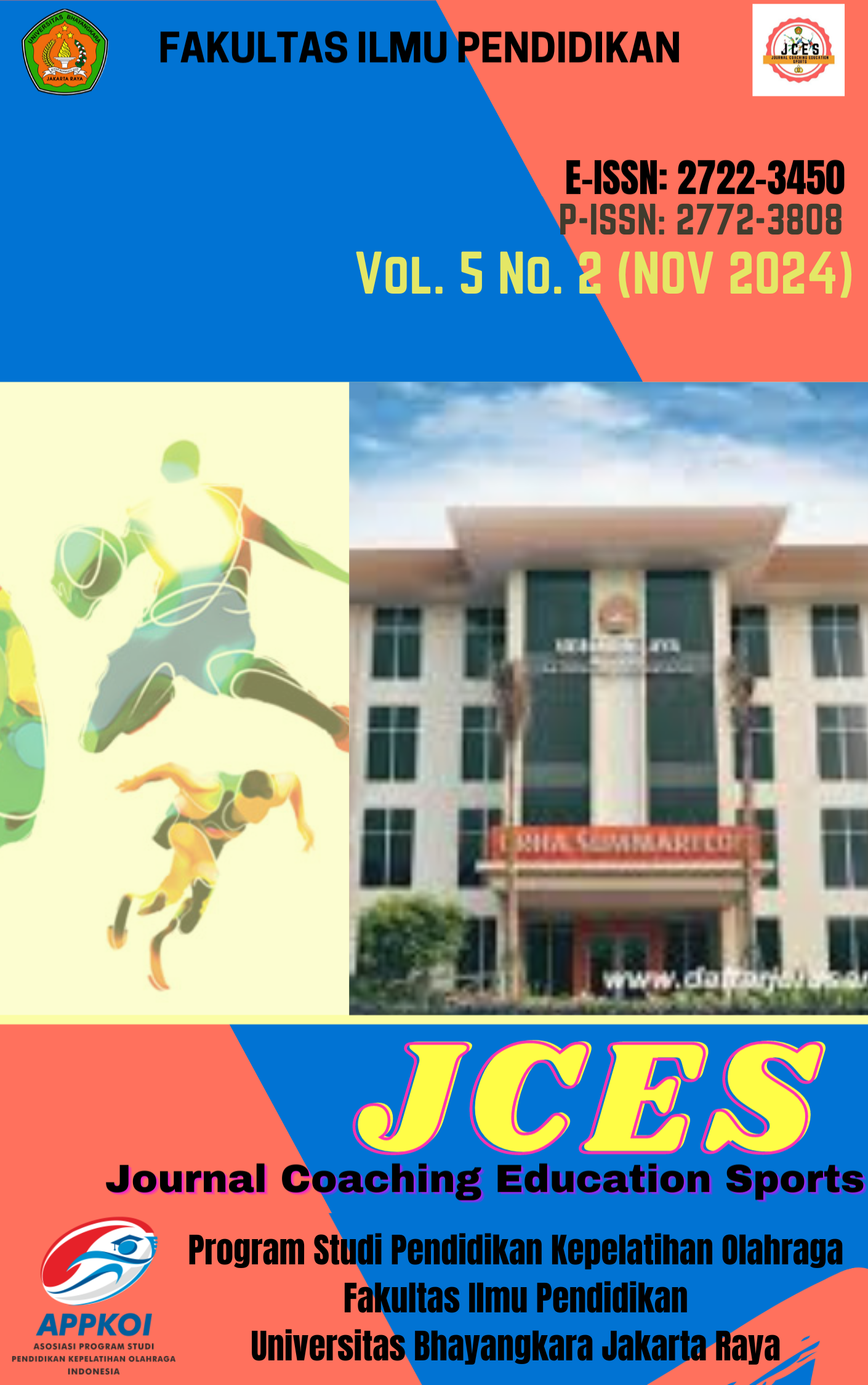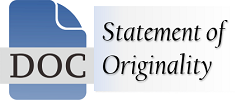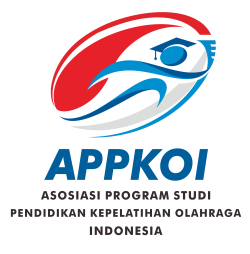The Relationship between Motor Skills and Physical Activity Patterns of Students with Disabilities in Special Schools
DOI:
https://doi.org/10.31599/hdre8845Keywords:
motor skills, physical activity, intellectual disabilities, special education, inclusive physical educationAbstract
The research employs a quantitative descriptive method with a correlational design, involving 20 students (15 boys and 5 girls) from SLB Negeri Mutiara Bahari Mandiri, Sukabumi, selected through purposive sampling. Data collection utilized the Movement Assessment Battery for Children Second-editions (MABC-2) to measure motor skills and the Physical Activity Questionnaire for Children (PAQ-C) to assess physical activity levels. Results revealed an average motor skill score of 54.85, classified as "difficulty performing motor tasks," and an average physical activity score of 2, categorized as "low activity." Correlation analysis using Spearman's correlation demonstrated a significant positive relationship (r = 0.661, p = 0.002) between motor skills and physical activity. The findings highlight that students with better motor skills are more likely to engage in physical activities and vice versa. However, many students with intellectual disabilities face challenges in performing motor tasks, particularly those requiring hand-eye coordination, such as catching or bouncing a ball. The lack of stimulation, attention, and adequate facilities also contributes to low physical activity levels, with students often preferring sedentary activities like watching television or playing online games. This study underscores the importance of increasing motor skills and physical activity through collaborative efforts by schools, teachers, parents, and the community. Providing adequate facilities, engaging activities, and continuous encouragement can foster active participation and improve motor skill development in children with intellectual disabilities. These findings offer valuable insights for educators and policymakers in developing inclusive physical education programs tailored to the needs of children with special needs.
Downloads
References
Acharya, K., & Msall, M. E. (2011). Introduction: Bioethics and intellectual disability-scientific promise, social context and policy.
Afandi, A. (2019). Textbook of Motor Education and Development. Uwais Inspirasi Indonesia.
Afandi, A., & Susanto, R. (2019). Development of Textbooks in Motor Development Subjects Based on Lectora Applications to Improve Student Learning Outcomes in the PJKR Department of IKIP Budi Utomo Malang. In Proceedings of the National Seminar on Sports Science and Technology (SENALOG) (Vol. 2, No. 1).
Afifah, N. (2024). The Relationship between Family Roles and Gross Motor Skills of Children with Intellectual Disabilities at Reskiani Special School in Makassar City (Doctoral dissertation, Hasanuddin University).
Al Irsyadi, F. Y., & Nugroho, Y. S. (2015). Educational game of limb recognition and number recognition for children with special needs based on kinect. Proceedings of Snatif, 13-20.
American Psychiatric Association. (2013). Diagnostic and statistical manual of mental disorders (5th ed.). Washington, DC: American Psychiatric Publishing
Amtarina, R. (2017). Benefits of Regular Physical Activity on Improvement of Cognitive Function in Patients with Mild Cognitive Impairment. Journal of Medical Sciences, 10(2), 140-147.
Ardiansyah, I. The Effect of Family Social Support on the Social Independence of Mild Tunagrahita Children at SLB Negeri 01 Elementary School, South Jakarta (Bachelor's thesis, Faculty of Da'wah and Communication Sciences, Syarif Hidayatullah State Islamic University Jakarta).
Ardiyanto, A., & Sukoco, P. (2014). Development of a traditional game-based learning model to improve gross motor skills of mildly disabled children. Journal of Sport, 2(2), 119-129.
Asriani, N. (2019). Indonesia, M. P. B. D. S. Speaking Ability of Children with Special Needs: Case Study of Tunagrahita Children in Slb Pk & Plk Galesong.
Babic, M. J., Morgan, P. J., Plotnikoff, R. C., Lonsdale, C., White, R. L., & Lubans, D. R. (2014). Physical Activity and Physical Self-Concept in Youth: Systematic Review and Meta-Analysis. Sports Medicine, 44(11), 1589-1601. https://doi.org/10.1007/s40279-014-0229-z
Barnett, L. M, Morgan, P. J., Beurden, V., E., & Beard, J. R. (2008). Perceived sports competence mediates the relationship between childhood motor skill proficiency and adolescent physical activity and fitness: A longitudinal assessment. International Journal of Behavioral Nutrition and Physical Activity, 5, 1-12. https://doi.org/10.1186/1479-5868-5-40
Barnett, Lisa M., Vazou, S., Abbott, G., Bowe, S. J., Robinson, L. E., Ridgers, N. D., & Salmon, J. (2016). Construct validity of the pictorial scale of Perceived Movement Skill Competence. Psychology of Sport and Exercise, 22, 294-302. https://doi.org/10.1016/j.psychsport.2015.09.002
Benítez-Porres, J., López-Fernández, I., Raya, J. F., Álvarez Carnero, S., Alvero-Cruz, J. R., & Álvarez Carnero, E. (2016). Reliability and validity of the PAQ-C questionnaire to assess physical activity in children. Journal of School Health, 86(9), 677-685.
Billitz, J. (2015). Goal orientation and intrinsic motivation for physical education: Does perceived competence matter? Journal of Physical Education, Recreation & Dance, 86(9), 53-53. https://doi.org/10.1080/07303084.2015.1086620
Booth, M. (2000). Assessment of physical activity: an international perspective. Research quarterly for exercise and sport, 71(sup2), 114-120.
Brown, D. E., Katzmarzyk, P. T., & Gotshalk, L. A. (2018). Physical activity level and body composition in a multiethnic sample of school children in Hawaii. Annals of human biology, 45(3), 244-248.
Burhaein, E. (2017). Sports physical activity for growth and development of elementary school students. Indonesian Journal of Primary Education, 1(1), 51-58.
Burrows, E. J., Keats, M. R., & Kolen, A. M. (2014). Contributions of after school programs to the development of fundamental movement skills in children. International journal of exercise science, 7(3), 236.
Cameron, C. E., Brock, L. L., Murrah, W. M., Bell, L. H., Worzalla, S. L., Grissmer, D., & Morrison, F. J. (2012). Fine motor skills and executive function both contribute to kindergarten achievement. Child development, 83(4), 1229-1244.
Carmeli, E., Bar-Yossef, T., Ariav, C., Levy, R., & Liebermann, D. G. (2008). Perceptual-motor coordination in persons with mild intellectual disability. Disability and rehabilitation, 30(5), 323-329.
Centers for Disease Control and Prevention. (2018). Early Childcare and Education Obesity Prevention Program. Retrieved June 10, 2020, from www.cdc.gov. website: https://www.cdc.gov/obesity/strategies/ece-obesity-prevention- program.html
Chan, C. H., Ha, A. S., Ng, J. Y., & Lubans, D. R. (2019). Associations between fundamental movement skill competence, physical activity and psycho-social determinants in Hong Kong Chinese children. Journal of Sports Sciences, 37(2), 229-236.
Choi, B., Leech, K. A., Tager-Flusberg, H., & Nelson, C. A. (2018). Development of fine motor skills is associated with expressive language outcomes in infants at high and low risk for autism spectrum disorder. Journal of neurodevelopmental disorders, 10(1), 1-11.
Christiari, A. Y., Syamlan, R., & Kusuma, I. F. (2013). The relationship between mothers' knowledge about early stimulation and motor development in children aged 6-24 months in Mayang District, Jember Regency. Health Library, 1(1), 20-23.
Clark, J. E. (2007). On the problem of motor skill development. Journal of Physical Education, Recreation & Dance, 78(5), 39-44.
Connelly, L. M. (2013). Limitation section. Medsurg Nursing, 22(5), 325.
Creswell, J. W. (2002). Research design. Qualitative & Quantitative Approaches, Jakarta: KIK.
De Freitas Vasconcelos, B. F. C. (2018). Movement Assessment Battery for Children-2: validity, reliability and motor performance of age band 3 for Portuguese children.
De Ligt, J., Willemsen, M. H., Van Bon, B. W., Kleefstra, T., Yntema, H. G., Kroes, T., & Vissers, L. E. (2012). Diagnostic exome sequencing in persons with severe intellectual disability. New England Journal of Medicine, 367(20), 1921-1929.
De Santis, A., Siciliano, B., De Luca, A., & Bicchi, A. (2008). An atlas of physical human-robot interaction. Mechanism and Machine Theory, 43(3), 253-270.
Indonesian Ministry of Health. 2011. Guidelines for the Implementation of Stimulation, Detection and Early Intervention of Child Growth and Development at the Basic Health Service Level.
Indonesian Ministry of Health. Infant Development Screening in Indonesia. Jakarta: Directorate of Child Health Development, Ministry of Health. 2003
Dhyana, S. P. M. (2019). Analysis of Daily Physical Activity on the Intensity of Menstrual Pain (dysmenorrhea).
Diba, F., Zahtamal, Z., & Pardede, I. (2024). Overview of Awareness and Intention of Skinny Adolescents About Physical Exercise. Journal of Medical Sciences, 14(1), 59-67.
Eisenhower, A. S., Baker, B. L., & Blacher, J. (2005). Preschool children with intellectual disability: syndrome specificity, behavior problems, and maternal well-being. Journal of intellectual disability research, 49(9), 657-671.
Fairclough, S. (2003). Physical Activity, Perceived Competence and Enjoyment During High School Physical Education. European Journal of Physical Education, 8(1), 5-18. https://doi.org/10.1080/1740898030080102
Fallo, I. S., Ardimansyah, A., & Hidayati, N. (2020). Learning Dimensions of Motor Development-Based Kasti Game with Command Teaching Style for Elementary School Students. Journal of Sports Education, 9(1), 41-59.
Field, F. (2010). The Foundation Years: preventing poor children becoming poor adults, The report of the Independent Review on Poverty and Life Chances. The Stationery Office.
Fitriani, R., & Adawiyah, R. (2018). Physical motor development of early childhood. Journal of Golden Age, 2(01), 25-34.
Fraenkel, J. R., Wallen, N. E., & Hyun, H. H. (2012). How to design and evaluate research in education
Frank, M. L., Flynn, A., Farnell, G. S., & Barkley, J. E. (2018). The differences in physical activity levels in preschool children during free play recess and structured play recess. Journal of Exercise Science and Fitness, 16(1), 37-42. https://doi.org/10.1016/j.jesf.2018.03.001
Gabbard, C. (2012). Lifelong motor development (6th ed.). San Francisco: Pearson Benjamin Cummings.
Gabbard, C., & Krebs, R. (2012). Studying environmental influences on motor development in children. Physical Educator, 69(2), 136.
Gilissen, C., Hehir-Kwa, J. Y., Thung, D. T., van de Vorst, M., van Bon, B. W., Willemsen, M. H., ... & Veltman, J. A. (2014). Genome sequencing identifies major causes of severe intellectual disability. Nature, 511(7509), 344-347.
Gordon, E. S., Tucker, P., Burke, S. M., & Carron, A. V. (2013). Effectiveness of physical activity interventions for preschoolers: a meta-analysis. Research Quarterly for Exercise and Sport, 84(3), 287-294.
Griffiths, L. J., Parsons, T. J., & Hill, A. J. (2010). Self-esteem and quality of life in obese children and adolescents: a systematic review. International Journal of Pediatric Obesity, 5(4), 282-304.
Guarte, J. M., & Barrios, E. B. (2006). Estimation under purposive sampling. Communications in Statistics-Simulation and Computation, 35(2), 277-284.
Hakim, A. R. (2013). The effect of age and balance training on gross motor skills of low-grade special school students. Journal of physical education and sports, 2(1).
Hakim, A. R. (2016). The Influence of Gross Motor of Tunagrahita Children on Fine Motor. JOURNAL OF SCIENCE PENJAS (Research, Education and Teaching), 2(2).
Hallal, P. C., Andersen, L. B., Bull, F. C., Guthold, R., Haskell, W., Ekelund, U., & Lancet Physical Activity Series Working Group. (2012). Global physical activity levels: surveillance progress, pitfalls, and prospects. The lancet, 380(9838), 247-257.
Hamdiyah, H. (2016). Cognitive Learning Methods in Pai in Improving the Thinking Ability of Tunagrahita Children (Multi-case Study at SLB PGRI Kedungwaru and SLB C Negeri Tulungagung) (Doctoral dissertation, IAIN Tulungagung).
Handayana, S., Zuhairi, Z., & Hakim, N. (2019). Efforts to Improve Fine Motor Skills of Early Childhood in Pekon Negeri Ratu 2 Pesisir Barat through Collage Technique Painting. DEDICATION: Journal of Community Service, 1(1), 56-63.
Hapsari, P. W. (2011). Factors associated with muscle endurance measured using the 30-second sit-up test in elementary school children at SDN Pondok Cina 03. Thesis. Faculty of Public Health. Website.
Downloads
Published
Issue
Section
License
Copyright (c) 2024 Cep Mumin, Ahmad Alwi Nurudin, Muhammad Saleh

This work is licensed under a Creative Commons Attribution 4.0 International License.






.png)







